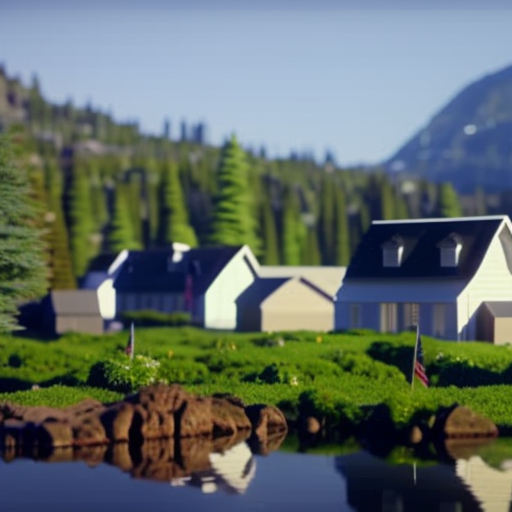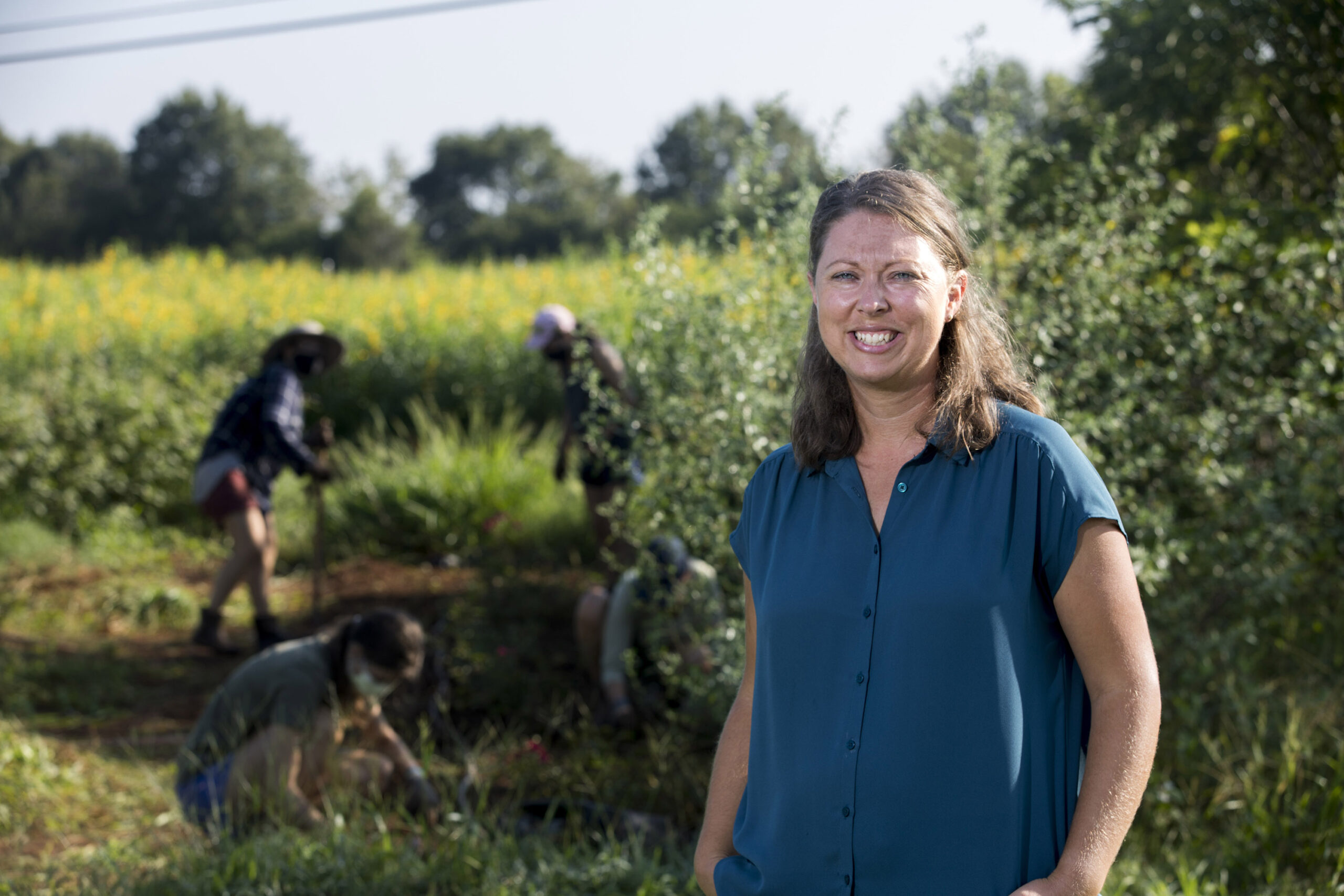
Building Super Energy-Efficient Homes in Oregon
STEVE INSKEEP, HOST:
You can build a house in ways that make it comfortable while using hardly any energy. People have understood this for centuries. Think of houses in hot climates with thick walls and high ceilings so the rooms stay pretty cool by themselves. Now, at a time when climate change makes people think about energy use, a tribal community in Oregon is building super energy-efficient homes. Oregon Public Broadcasting’s Monica Samayoa met a homeowner.
Marcela Selwyn’s New Home
MONICA SAMAYOA, BYLINE: Marcela Selwyn is excited to see her nearly finished two-bedroom townhome.
MARCELA SELWYN: Oh, my goodness. Oh, wow.
SAMAYOA: There are 24 townhomes like Selwyn’s – all part of what’s called the Creekside Elder Housing development. These townhomes are for the Confederated Tribes of Grand Ronde’s elders who live about an hour and a half southwest of Portland.
SELWYN: This is huge. I love it.
Highly Energy Efficient Design
SAMAYOA: Selwyn is 80 years old. She’s lived in a Grand Ronde community for 17 years. Her new home is designed to be highly energy efficient. She has all-electric appliances, solar panels, battery storage, a heat pump, and an electric vehicle charger. But it’s the sun tunnels she likes best that bring natural light through the ceiling to brighten hallways.
SELWYN: I never knew that – how much light there was going to be. I love that.
Working Towards Sustainable Development Goals
SAMAYOA: The Confederated Tribes of Grand Ronde worked with a nonprofit, Energy Trust of Oregon, to put energy-saving technologies into each home in the development. The goal is to help reduce emissions that contribute to human-caused climate change.
DENISE HARVEY: We’ve all learned more about climate change and the effects of that.
SAMAYOA: This is Denise Harvey. She’s a Grand Ronde Tribal Council member.
HARVEY: And the energy efficiency opportunities come up. Pretty much today, we try and do this with all of our new construction.
SAMAYOA: Harvey says high construction costs have always been an issue for the tribe, as well as figuring out ways to help tribal members deal with wildfire smoke in extreme heat. Now, Harvey says, tribal elders can live in these energy-efficient homes while continuing the tradition of being good stewards of the Earth.
HARVEY: I think it’s just over time where you show people, you educate them, you – they experience it. And then it’s something that they’ve learned, something that’s new, something they transfer down to their children, their grandchildren.
Self-Sufficient Energy Production
SAMAYOA: Each new home will produce enough energy from solar panels to power them without tapping into the power grid. Scott Leonard with the Energy Trust of Oregon says the tribe’s focus on building energy-efficient homes is more cost-effective than retrofitting them. He says the tribe also reduced costs by using renewable energy rebates from the state and local nonprofits. It’s a plan Leonard hopes others can replicate.
SCOTT LEONARD: It’s important for kind of everyone to know that this can be done.
SAMAYOA: Similar homes are being built in smaller communities in the country, including North Carolina. Carlos Eduardo Martin directs the Remodeling Futures Program at Harvard. He says the Creekside Elder Housing development shows what can be done with energy-efficient technologies to lower emissions.
CARLOS EDUARDO MARTIN: I’m grateful for projects like this that show technologies that we know work applied to a community that needs them, that deserves them.
SAMAYOA: The technology isn’t new, but Martin says building homes with a focus on energy efficiency deserves to be embraced more.
MARTIN: I’d like to hope that we’re going to see more of this trend, mainly because of some of the recent legislation.
Achieving Sustainable Development through Energy Efficiency
SAMAYOA: He’s referring to the country’s first major climate policy that dedicates billions of dollars toward the renewable energy transition. That includes helping homeowners switch to energy-efficient appliances – features Marcela Selwyn and other elders are enjoying.
SELWYN: I have no words to say.
SAMAYOA: Selwyn moved into her new townhouse this spring with her son and dog.
SELWYN: I’m just excited over it.
SAMAYOA: For NPR News, I’m Monica Samayoa in Portland.
(SOUNDBITE OF MUSIC) Transcript provided by NPR, Copyright NPR.
NPR transcripts are created on a rush deadline by an NPR contractor. This text may not be in its final form and may be updated or revised in the future. Accuracy and availability may vary. The authoritative record of NPR’s programming is the audio record.
SDGs, Targets, and Indicators
-
SDGs Addressed or Connected to the Issues Highlighted in the Article:
- SDG 7: Affordable and Clean Energy
- SDG 11: Sustainable Cities and Communities
- SDG 13: Climate Action
-
Specific Targets Based on the Article’s Content:
- SDG 7.2: Increase substantially the share of renewable energy in the global energy mix.
- SDG 11.1: By 2030, ensure access for all to adequate, safe, and affordable housing and basic services and upgrade slums.
- SDG 13.2: Integrate climate change measures into national policies, strategies, and planning.
-
Indicators Mentioned or Implied in the Article:
- Energy efficiency technologies implemented in the homes, such as solar panels, battery storage, heat pumps, and electric vehicle chargers.
- Reduction of emissions that contribute to human-caused climate change.
- Production of enough energy from solar panels to power the homes without relying on the power grid.
- Cost-effectiveness of building energy-efficient homes compared to retrofitting them.
- Utilization of renewable energy rebates from the state and local nonprofits to reduce costs.
Table: SDGs, Targets, and Indicators
| SDGs | Targets | Indicators |
|---|---|---|
| SDG 7: Affordable and Clean Energy | Increase substantially the share of renewable energy in the global energy mix (Target 7.2) | – Energy efficiency technologies implemented in the homes, such as solar panels, battery storage, heat pumps, and electric vehicle chargers. – Production of enough energy from solar panels to power the homes without relying on the power grid. |
| SDG 11: Sustainable Cities and Communities | By 2030, ensure access for all to adequate, safe, and affordable housing and basic services and upgrade slums (Target 11.1) | – Energy efficiency technologies implemented in the homes, such as solar panels, battery storage, heat pumps, and electric vehicle chargers. – Cost-effectiveness of building energy-efficient homes compared to retrofitting them. – Utilization of renewable energy rebates from the state and local nonprofits to reduce costs. |
| SDG 13: Climate Action | Integrate climate change measures into national policies, strategies, and planning (Target 13.2) | – Reduction of emissions that contribute to human-caused climate change. |
Copyright: Dive into this article, curated with care by SDG Investors Inc. Our advanced AI technology searches through vast amounts of data to spotlight how we are all moving forward with the Sustainable Development Goals. While we own the rights to this content, we invite you to share it to help spread knowledge and spark action on the SDGs.
Fuente: wunc.org

Join us, as fellow seekers of change, on a transformative journey at https://sdgtalks.ai/welcome, where you can become a member and actively contribute to shaping a brighter future.






